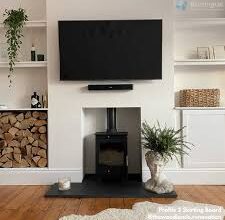Microwave technology has emerged as a reliable solution for treating wood against pests like termites, woodworms, and other borers. But with its rise, so have the myths—especially the idea that microwaves somehow “damage” or “weaken” wood. The truth? When applied correctly, microwaves are not only safe for wood integrity, but also offer a more precise, non-invasive method of disinfestation than many traditional options.
Let’s break down some of the most common myths and separate fact from fiction.
Myth 1: Microwaves Burn or Char Wood
This myth stems from a misunderstanding of how microwaves work. In reality, microwaves target moisture-rich areas—mainly the pests inside the wood, not the wood itself. Microwave energy causes water molecules to vibrate, generating heat. Since insects and larvae have high internal moisture content, they absorb this energy much faster than the surrounding wood.Visit Online shashel for More details.
In properly controlled applications, wood temperatures typically stay within 60°C to 80°C, well below the point of combustion. Burning or charring only occurs if a machine is misused—just like a toaster or space heater can be dangerous if left unattended.
Myth 2: Microwaves Weaken Structural Timber
Many believe microwave treatment alters the internal structure of wood, affecting strength. The truth? Microwave energy does not break down cellulose or lignin, the primary structural components of wood. Unlike fire or harsh chemicals, microwaves don’t alter wood chemistry. In fact, research shows that wood’s mechanical properties remain unchanged when microwaves are used within safe temperature thresholds.
In short, beams, floors, and supports treated with microwaves maintain their original strength—making it a safe option even for heritage buildings and load-bearing structures.
Myth 3: Microwaves Dry Out the Wood Too Much
Drying is a side effect, not the main purpose, of microwave pest control. Yes, moisture is reduced slightly—but not to the point of cracking or desiccation. In most cases, only localized moisture is affected, helping prevent future infestations (since insects are drawn to damp environments). The small drop in moisture is actually beneficial for wood preservation.
Professional devices are calibrated to stop heating once pests are neutralized, long before the wood can over-dry or warp.
Myth 4: Only Raw Wood Can Be Treated Safely
Many people assume that microwaves only work on bare or untreated wood, and might ruin painted, lacquered, or stained surfaces. That’s false. Microwaves can penetrate most non-metallic coatings like paint, varnish, or wallpaper, treating the infested wood beneath without damaging the surface.
Unless there’s metal foil or hardware in the way (which reflects microwaves), the process is safe for finished or decorative wood—making it ideal for antique furniture, heritage buildings, and modern interiors alike.
Myth 5: Microwave Equipment Is Too Risky to Use Indoors
Microwave tools for pest control are specifically engineered with sealed waveguides, thermal sensors, and user safeguards. Unlike industrial ovens or high-power radiation sources, they’re designed to focus energy precisely and safely.
When operated correctly, these systems emit no residual radiation, no toxins, and no harmful emissions. In fact, microwave disinfestation is often used in museums, libraries, and residential homes—places where safety and cleanliness are essential.
Conclusion: Wood Integrity Remains Intact
Microwave pest control doesn’t damage wood—it protects it. By killing pests from within without chemicals or structural alterations, it allows wood to retain its natural strength, appearance, and durability. Like any technology, the key is using the right equipment with the right technique.



